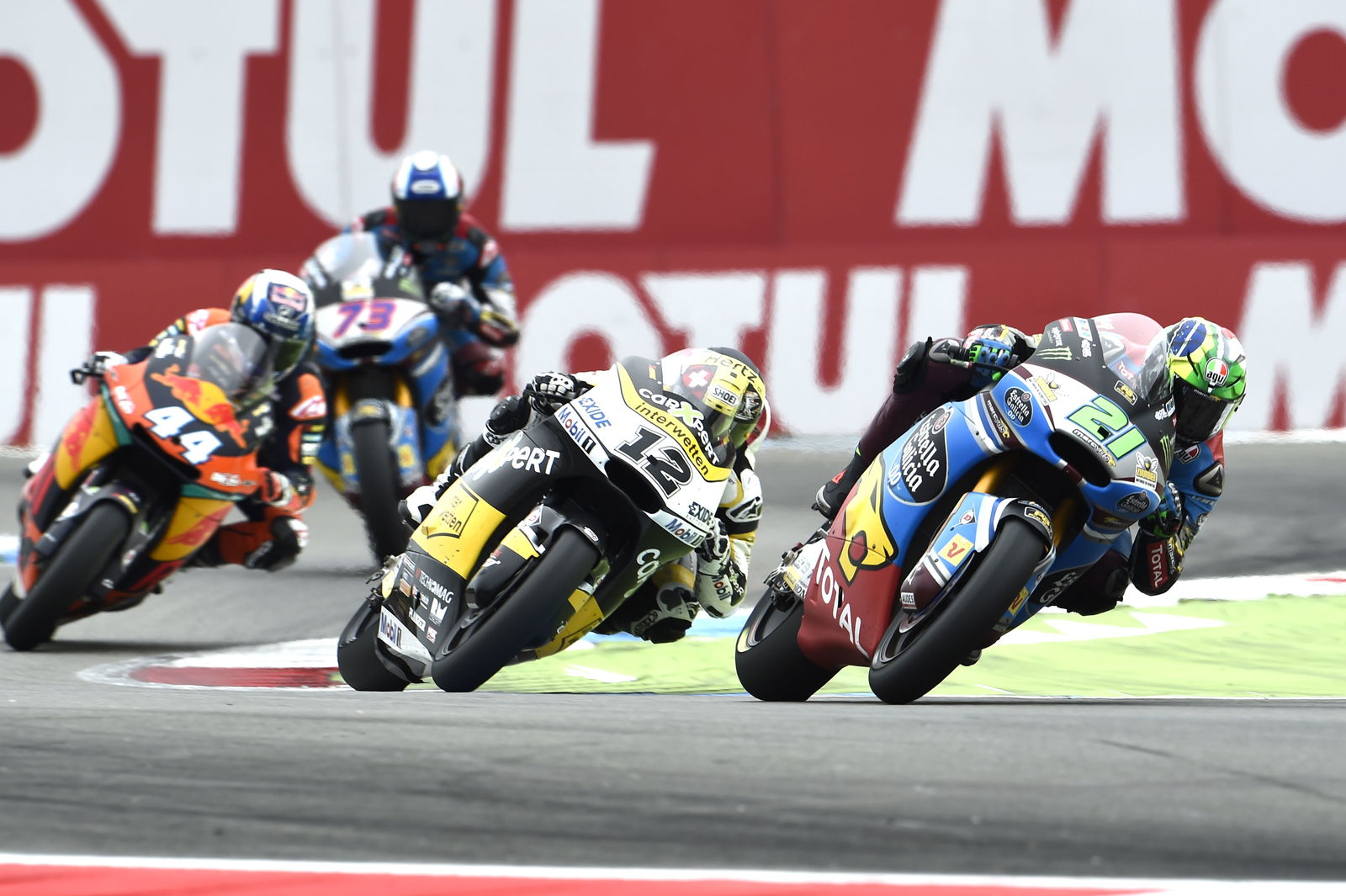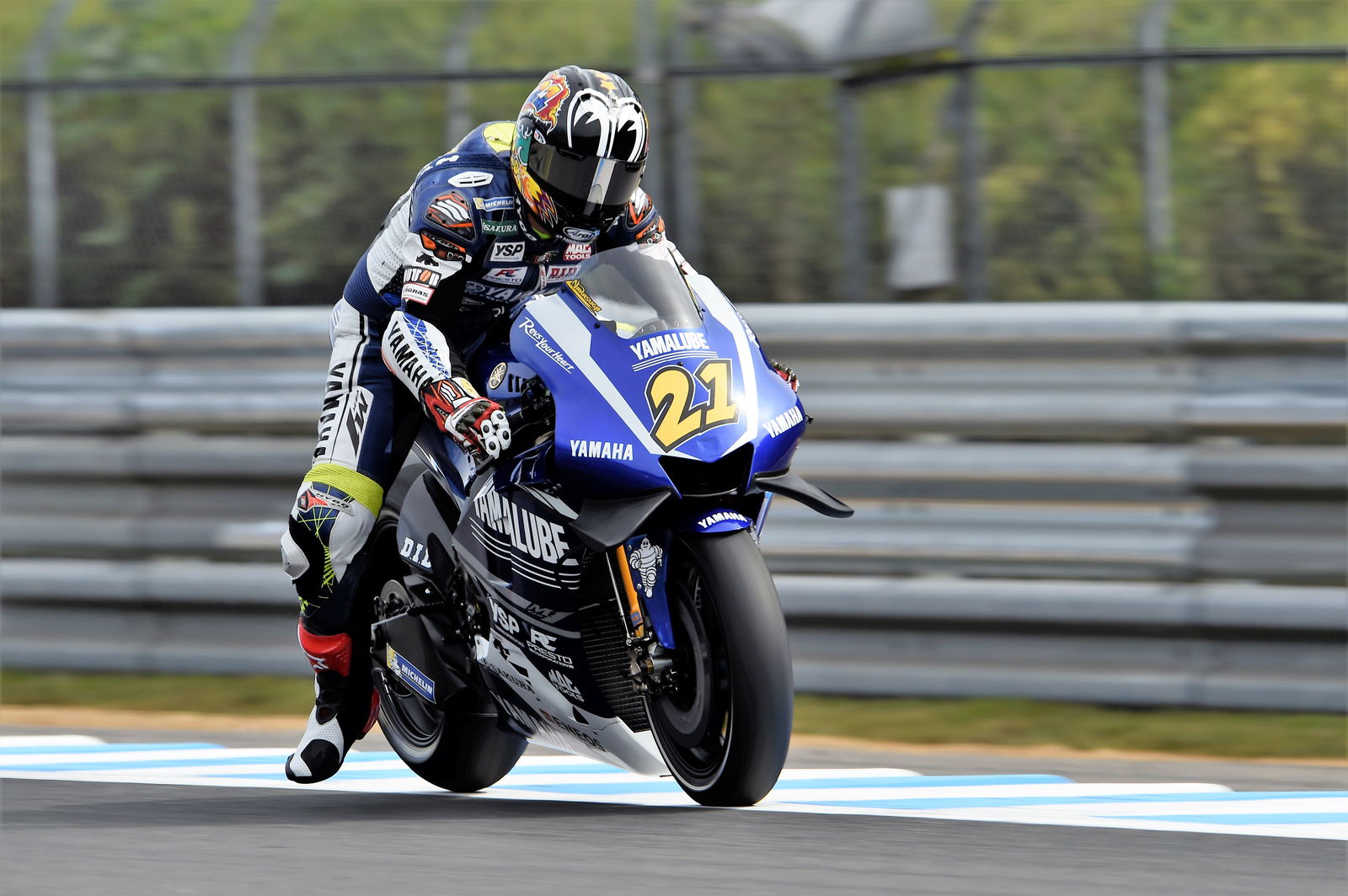MotoGP: Oil burn, flexible aerodynamics, fuel tanks
Having discussed some of the potential theories behind the Ducati 'salad box', part two of Crash.net's interview with MotoGP Director of Technology Corrado Cecchinelli saw attention turn to 'oil burn', deliberate aerodynamic flex and fuel tank design.
Crash.net:

Having discussed some of the potential theories behind the Ducati 'salad box', part two of Crash.net's interview with MotoGP Director of Technology Corrado Cecchinelli saw attention turn to 'oil burn', deliberate aerodynamic flex and fuel tank design.
Crash.net:
'Oil burn', where engine oil featuring some kind of performance additives is deliberately burnt as fuel, has been frequently discussed in F1 this year. In theory, would it be possible in MotoGP?
Corrado Cecchinelli:
In theory, it is possible.
One theoretical reason for doing it in Formula One - if they are doing it - is simply to get around the fuel limit.
They have a limited amount of fuel and also a limited fuel flow rate. So, if you burn something that doesn't pass through the conventional fuel lines, that is an additional advantage.
But to me the main reason why they would do it is because you can put anti-detonation additives in the oil, so you can run higher compression ratios.
Because the amount of oil that you can actually burn is small, to me you can’t really make a difference in the quantity of energy. But you can make a big difference in the anti-detonation properties of the final mix.
And this is also one good reason not to do it in motorcycling, because motorcycles have non-turbo engines so there is no real need to do that.
Another reason why I don't think it applies to motorcycles is because, while it can be done even if it is theoretically forbidden in Formula One, there is no practical way to do it in motorcycles, also because the fuel quantity limit is not that strict here.
Plus, I'm not an expert, but to me the amount of oil you can burn, for instance with piston ring blow-by [leaking around the piston], is not enough. So you would probably need to introduce a deliberate oil leak and you can do that for instance in Formula One using the turbo bearings, which you don’t have in motorcycles.
Crash.net:
So the practical delivery of the oil into the combustion chamber would be the biggest problem in motorcycles?
Corrado Cecchinelli:
Yes. Clearly you cannot have an oil injector, so you have to find a smart way to operate in a scenario where oil burn is 'banned' and there are many more practical options to do this in Formula One, because you have a turbo and you need oil cooling of the bearings, so you can leak oil there.
Apart from that, you could try and control the piston blow-by, but that would be very complicated and even more so for a bike.
Cars have proper dry sump technology, where you have a vacuum in the crankcase, so the pressure is much lower than ambient. However, you could in theory add a valve that controls this vacuum to deliberately help blow-by to deliver the oil… but this would be really complicated to do in a car, and much harder in a bike!
So there are a number of reasons why I don’t think it would be practical in motorcycles, mainly because it would simply not be as useful.
For a start, although as I said I don’t think it is the main reason, the fuel amount regulation is much stricter in cars than motorcycles.
As far as I know in MotoGP we have maybe one critical race for fuel consumption, which is Spielberg. So there is not really a big need to circumvent the fuel limits in motorcycles. 22 litres is more than reasonable.
Crash.net:
Could the other theory, of using oil burn to deliver higher-octane type additives, give a performance boost in qualifying for example?
Corrado Cecchinelli:
If I was designing a MotoGP engine and going to a higher compression ratio would be critical, I would prefer to work on fuel properties instead of trying to introduce some anti-knock [prevent fuel igniting before the spark] substance into the oil, and then try and find a way to deliver and burn that oil. To me it would be much too complicated.
As I said, compression ratio is much less of an issue in naturally aspirated [non-turbo] engines. I think it would be overkill in motorcycles.
There is also another issue, which I don't know how they solve in Formula One, but burning oil would also leave deposits. So you also need to formulate an oil that is deliberately going to be burned: A specific formula with anti-knock components as well as cleaning or detergent components so as not to leave deposits.
To me it's complicated. Maybe someone is doing it here in MotoGP, but to me I don't think so.
In Formula One, from what I have read, it sounds like it could give an extra boost in qualifying, which is one more reason for me to think the goal is anti-detonation rather than additional fuel.
So you can run higher pressure for a limited number of laps, but the goal is not to add 0.5% of combustion energy over the restricted fuel. It is more to add anti-knocking components.
Crash.net:
Approximately how much oil does a MotoGP engine have?
Corrado Cecchinelli:
I think it's one or two litres. I think nobody has a real dry sump with a separate reservoir and vacuum crankcase. I think they have systems that are 'in-between'; the crankcase is split in two and they try to remove the oil from the moving parts and move it to another part.
But I don’t think you really have a vacuum. Maybe you try to compensate for the piston blow-by pressure, so you don’t have high pressures, but not a vacuum. This is more car technology. They have separate reservoirs, high scavenging pumps in the engines and so on.
Also, one more thing, because in cars the centrifugal force would remove the oil from where you want to suck it. So if you don't have a proper scavenging and recirculating system you would probably have bearing failures.
In bikes you don't have that because you lean. This is one more reason, apart from the complexity and weight, not to exploit vacuum technology to the limit in motorcycles.
If you go on the track with your road car, one of the first issues is conrod bearing failures, because the oil pump doesn't suck the oil. The oil moves to the side of the engine because of the increased lateral force on a race track. In bikes, because of the lean, the level of the oil would be exactly like when the bike is not cornering, flushing apart, of course.
Crash.net:
Do you think teams regularly change the design of the inside of the fuel tank, for handling reasons? In other words, place fuel weight in different places to suit different circuits or weather conditions?
Corrado Cecchinelli:
I don't think they have different tanks for different situations. I also don't think they have moving devices to tune a tank for a specific reason. Like a moving baffle, to move a certain amount to the front and back of the tank.
But yes, you could in principle.
You could find an advantage to have a different weight distribution. For instance if you have a small quantity of fuel for qualifying, the ideal position for a small quantity would be different to the ideal distribution for a full tank.
Or maybe you would like to have more rear load in the wet, so you would have a 'wet tank' with more fuel towards the back of the tank.
But as far as I know they just have one model and I see that now everybody is trying to put fuel at the back and low down. Beneath the rider basically.
Crash.net:
F1 has clamped down repeatedly on deliberate wing flex, where the wing angle is designed to change depending on speed, by using load tests. Could load tests be needed for MotoGP wing fairings?
Corrado Cecchinelli:
The general premise is, I don’t think so! It's really a non-issue here. Given the other limitations we have in terms of dimensions of aerodynamics, I would not bother to test for flexibility.


